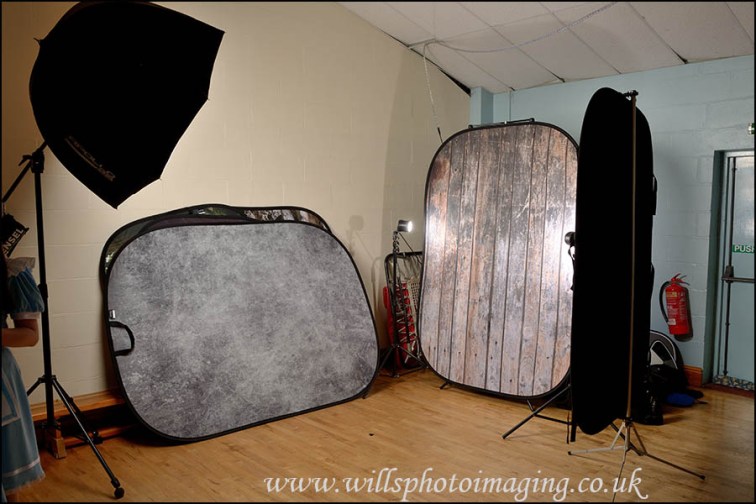Trying things out on paid jobs isn’t ideal since you have to know that you will ‘deliver the goods’. One of those many facets of being a professional photographer. When a friend asked for some help with some dance group photos for the programme cover that she was doing I saw the opportunity for me to try out the Lastolite mini-perspective and ‘creative’ backgrounds that I’d had for a while but, apart from the smoke one, hadn’t really used.

After setting up a Lastolite 8’ by 7’ background with some Hensel Expert and Integra Pro heads for the friend I started on my own setup. For simplicity I was using a ProFoto B1 in a Westcott Apollo Orb with front diffusion panel as the key light. For separation lighting I used a twin head ProFoto B2 set between the dancer and the background. Whilst I prefer the clip fitting stand for the backgrounds they are not quick to change, unlike the Manfrotto magnetic background holder. The mini perspective backgrounds is a set of 3 double sided backgrounds with options including a winter woodland, vegetation and a night time street. I also had with me some of their larger backgrounds. Once started these sort of sessions are quite a ‘production line’ process. ‘stand there, turn a bit to…….., click, click click, next’. There isn’t really time to be fussing about posing tweaks when you have about 60 ‘different’ people to get through as quickly as possible.

Below are a selection of the images all taken in the dance studio with no fussing over using a composite to put the background in. This is an important consideration when working professionally. The expression ‘time is money’ definitely resonates when it comes to time spent in front of a computer finishing off images. Quick and simple solutions start with getting the camera and flash settings optimised before taking a photograph. After that it is just a post-processing tweak and crop. Less than a minute per image. If I had to colour correct, sort out the exposure etc for each image then it would add more time than just using a light meter to set the exposure and a whitebalance target for a custom in-camera whitebalance reading. It also helps using quality flash units like the ProFoto and Hensel. Flash-to-flash consistency of colour temperature and power output is routine for these units. The same cannot be said for many cheaper lights, including those used in some local studios. As soon as you have to make individual colour and exposure corrections those cheaper lights are not only reducing the technical quality that can be achieved but are also costing a lot more of in terms of time. Oops, I seem to have ended on one of my hobby horses.












